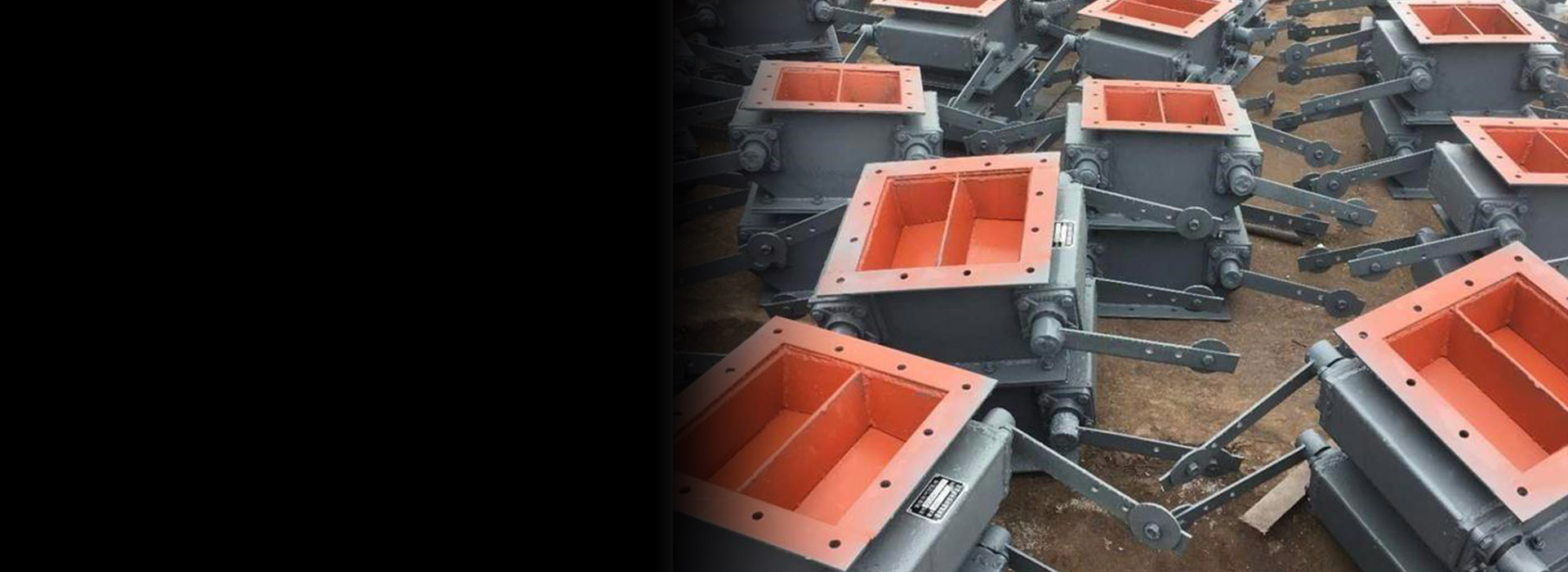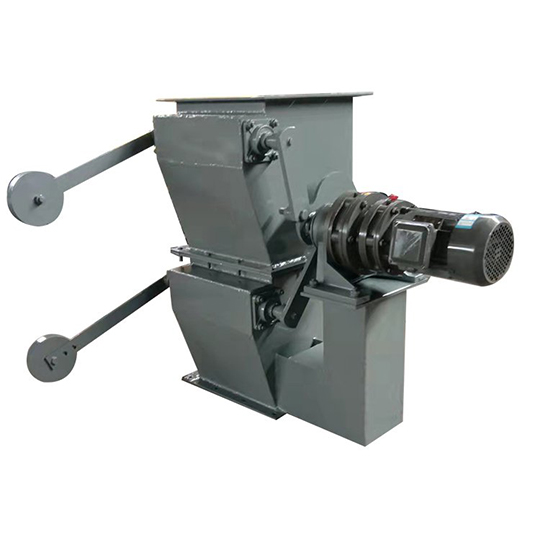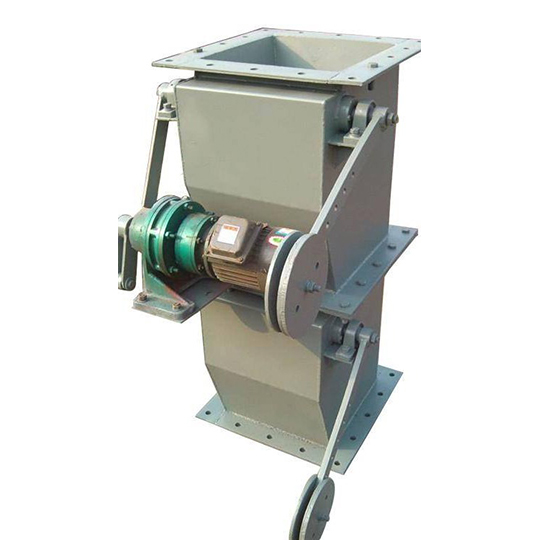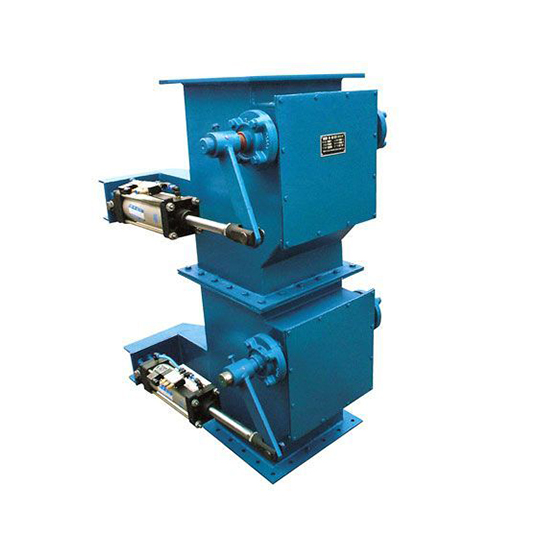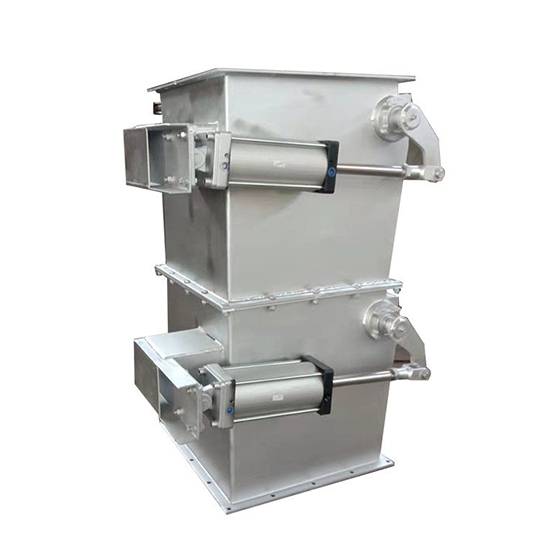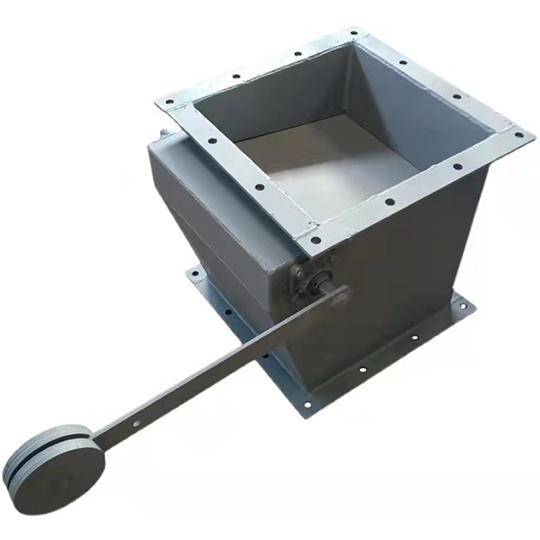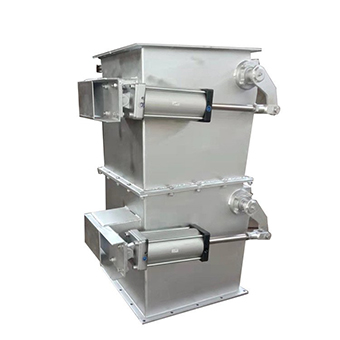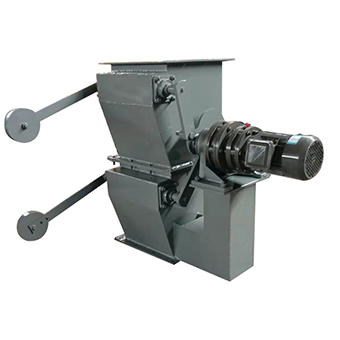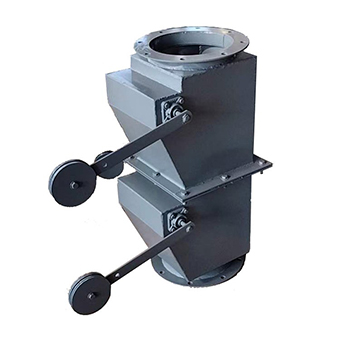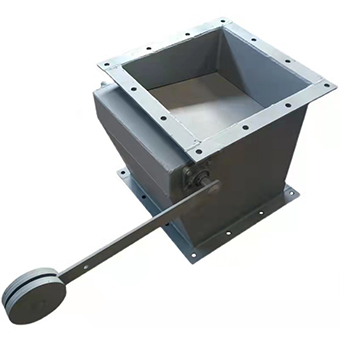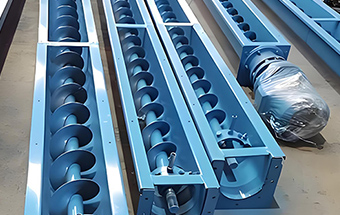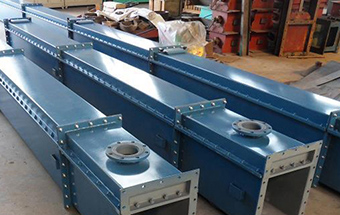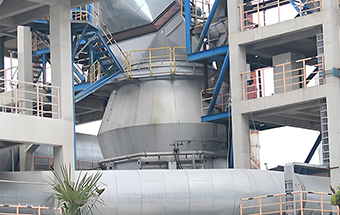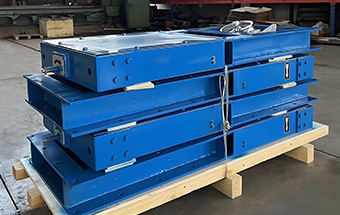Double flap valve for sale
- Alternating Dual-Flap Mechanism
Employs two flap plates that open and close in an alternating cycle, ensuring continuous material flow while maintaining an effective airlock. - Airtight Sealing
Engineered to prevent air leakage both above and below the valve during its operating cycle, preserving system pressure and preventing contamination. - Abrasion-Resistant Option
For abrasive materials, the valve can be equipped with Hardox liners in the flap and body, significantly increasing its resistance to wear and tear. - Versatility in Material Handling
Capable of handling a wide range of bulk materials, including solid, granular, powdery, and compact materials, under positive or negative pressure conditions.
Driven by a pneumatic actuator, ensure that at least one layer of the valve plate is always in a closed position.
Equipped with a complete electric actuator, supporting variable frequency speed control for precise control.
The air locking and unloading function is achieved by the alternating action of a single valve plate.
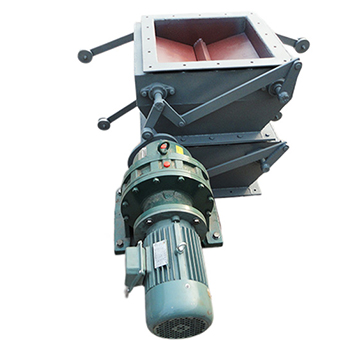
By alternating the plate, a continuous unloading cycle is formed, enhancing the ability to resist material jamming.
Our Advantages

The robust design minimizes wear and tear, resulting in lower maintenance requirements compared to other valve types.

Designed for uninterrupted material flow, facilitating a steady and controlled discharge of bulk materials.

Engineered to meet relevant industry safety standards, ensuring reliable and safe operation in various industrial environments.

The Material of Construction (MOC) can be tailored to suit specific application needs, enhancing compatibility with different types of bulk materials.
Wear-resistant flap plate
The wear-resistant flap plate of the double flap valve is one of its key components. Darko’s double flap valve is mainly used for sealing and discharging under high wear conditions. The material of the wear-resistant flap plate mainly consists of welded wear-resistant layer, composite wear-resistant plate and special alloy.
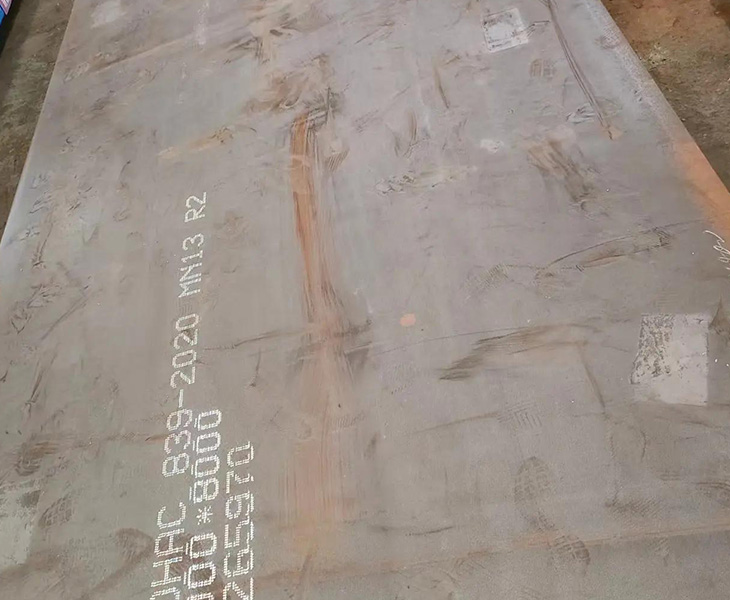
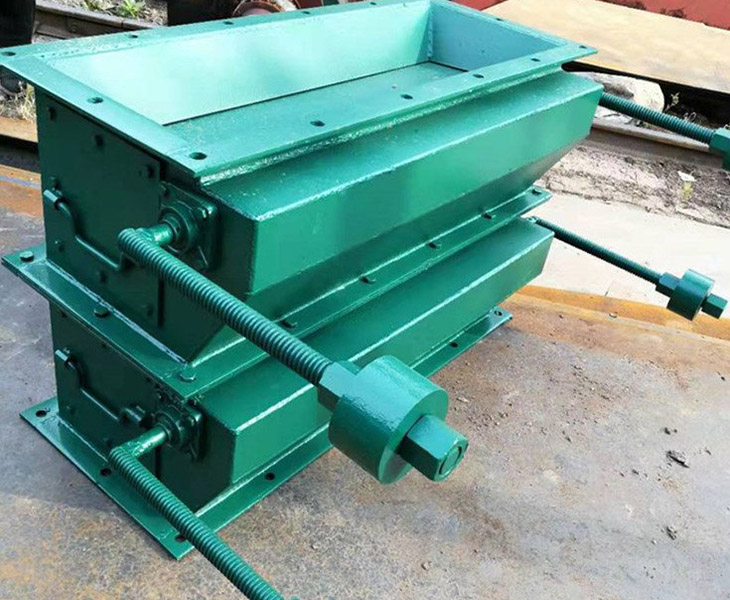
Weight-only actuation
The heavy hammer is usually made of carbon steel (Q235-B). For high-temperature or corrosive working conditions, stainless steel can be used. The lever components are mostly made of 45# steel or similar materials to ensure strength and wear resistance.
Pneumatic actuation system
Each flap plate has its own pneumatically operated cylinder and solenoid valve. The timing of the double flap valve is controlled by an electronic signal sent to the solenoid valves. This method of operation is design to provide first class automation with sequential controller for accurate timing of the desire functioning of the valve.
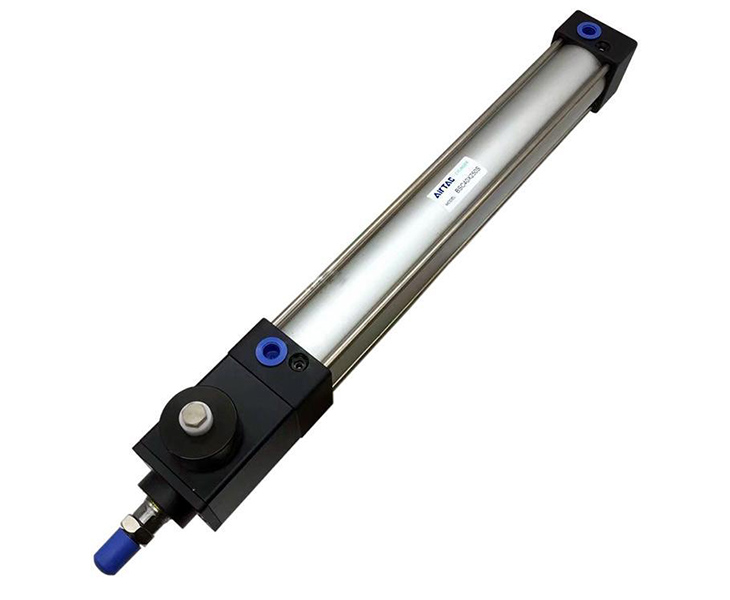
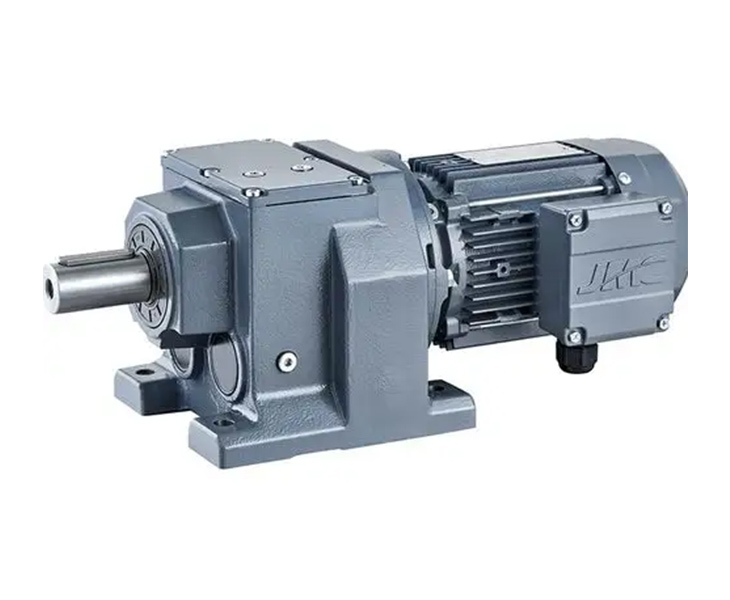
Motor actuation system
The motor actuation system can integrate electric drives (such as reducers, electro-hydraulic push rods), and supports remote monitoring and PLC automated control.
Double flap valve VS Rotary valve
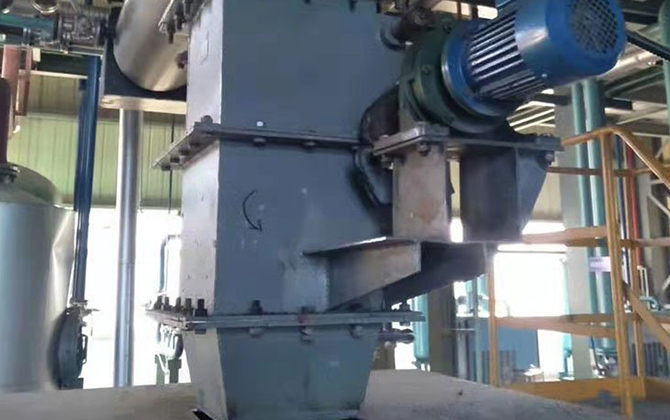
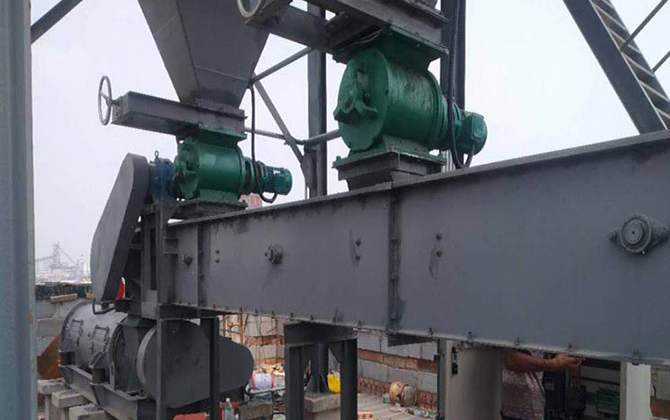
- Sealing Performance
- The double flap valve plates close alternately, providing good sealing performance, suitable for high negative or positive pressure environments.
- The rotary valve relies on the tight fit between the impeller and the casing for sealing. Long-term use may lead to axial leakage due to wear.
- Applicable Scenarios
- The double flap valve is suitable for high dust and high negative pressure environments in industries such as metallurgy, chemical, and power, like in dust collector hoppers.
- The rotary valve is more suitable for continuous quantitative discharge of powdered or small particle materials, commonly found in environmental protection, grain, and cement industries.
- Maintenance and Durability
- Simple structure of double flap valve and low failure rate lead to lower maintenance costs.
- Bearings and blades of rotary valves are prone to wear, requiring regular replacement of sealing components and lubrication, leading to a higher maintenance frequency.
- Size and Installation
- The double flap valve is larger in size, suitable for vertical installation.
- Compact structure of rotary valve can be flexibly installed in horizontal or vertical pipelines.
Double Flap Valve for Specialized Purpose
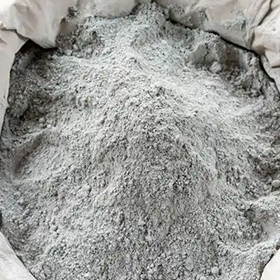
The alternating sealing design of the double flap valve plates can effectively prevent fine particles such as cement, coal powder, mineral powder, and flour, as well as gas backflow.
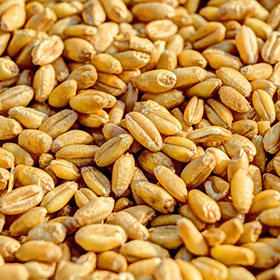
The angled valve plates of the flap valve automatically reset after unloading. They achieve a tight fit. This design provides better sealing performance than a single-layer structure. As a result, it reduces quality loss during the grain storage process.
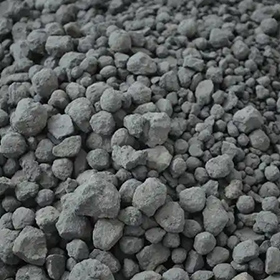
The flap valve plates are made from high-hardness wear-resistant steel plates r coated with a surface overlay of tungsten carbide. Their wear resistance can reach 5 to 8 times that of ordinary carbon steel.
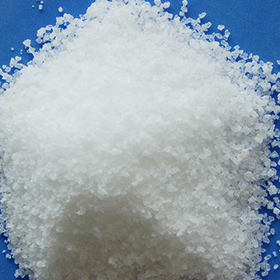
The flap valve body and sealing surfaces are made from nickel-based alloys or fluoropolymer materials, such as PTFE. This allows them to withstand strong alkaline corrosion, including that from sodium hydroxide. As a result, it prevents metal components from failing due to alkali embrittlement.
Related Product
-
-
Using material bed grinding increases the fine powder proportion in extruded materials.
-
The groove-free design prevents blockages and is ideal for materials like ash and cement.
Get Quick Response
If you have any other questions that are not listed in the FAQs, please do not hesitate to contact us; our team will contact you in very short time and provide you with personalized assistance to address your inquiries.
It combines the functions of unloading and air-locking. A double flap valve automatically discharges ash by the weight of the material and alternately closes the flap valve plates to prevent air from flowing through. It is suitable for the sealed transportation of dust or granular materials.
Sealing performance: The double layer structure always keeps one valve plate closed, reducing the air leakage rate by more than 50%;
Machinability: The beveled sealing surface reduces direct material erosion, extending the service life;
Reliability: Without an electric drive structure, the failure rate is reduced to that of traditional valves.
- Continuous discharge is required or precise control of flow (such as in chemical production lines);
- Integration of automation systems is needed (such as DCS/PLC remote control);
- High viscosity of the medium requires forced opening and closing (such as sludge, viscous liquids).
- Regular inspections: Wear condition of sealing surfaces (every 6 months), flexibility of counterweight lever;
- Damaged parts replacement: Wear-resistant sealing plates (with a lifespan of approximately 18-24 months) can be removed and replaced separately;
- Anti-freezing measures: In winter, to prevent the hopper from clogging the valve due to blockage, electric heating can be installed.



